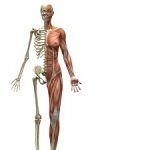The neutrophils are one that reaches the site of the infection quickly when the immune response triggers, and thus helps in fighting against the foreign particles by ingesting them. Eosinophils are another type of white blood cells, that fight against infection, allergies and diseases. Basophils are always present against allergens and prevent blood clotting in the body, as it … [Read more...] about Difference Between Neutrophils, Eosinophils and Basiophils
Difference Between Liverworts and Mosses
Liverworts and Mosses are the non-vascular and non-flowering plants that are found in wet and terrestrial environments. Though numerous essential differences lie between them. For instance, Liverwort belongs to the division - 'Marchantiophyta' or often term as'Hepaticophyta', while mosses fall under division - 'Bryophyta'. Secondly, liverworts have thallus or foliose that … [Read more...] about Difference Between Liverworts and Mosses
Differences Between Actin and Myosin
Actin is the collective molecules of protein from which thin bands are formed. On the other hand, Myosin is the group of protein by which thick bands are formed. Actin and Myosin are responsible for various types of cellular movements, and the most striking one is the muscle contraction, that provides the best-model to understand the role of actin and myosin. Now, to know … [Read more...] about Differences Between Actin and Myosin
Difference Between Kharif and Rabi Crops
Kharif and Rabi are the two varieties or group of crops that have been divided based on the season they require to grow. For instance, Jowar, Bajra, Maize, Sugarcane, Cotton, Pulses, etc., are such plants that grow in the rainy season and so-known as Kharif crops. On the contrary, Oats, Wheat, Gram, Barley, etc., are such plants that grow in the winter season and so-termed as … [Read more...] about Difference Between Kharif and Rabi Crops
Difference Between Conductors, Semiconductors and Insulators
Conductors, semiconductors and insulators can be distinguished on the ground of their conductivity and other properties. Conductors like metals show conductivity at room temperature, but as the temperature increases, their conductivity gets reduced. However, semiconductors act as the insulators at low temperature but as the temperature increases so their conducting … [Read more...] about Difference Between Conductors, Semiconductors and Insulators





